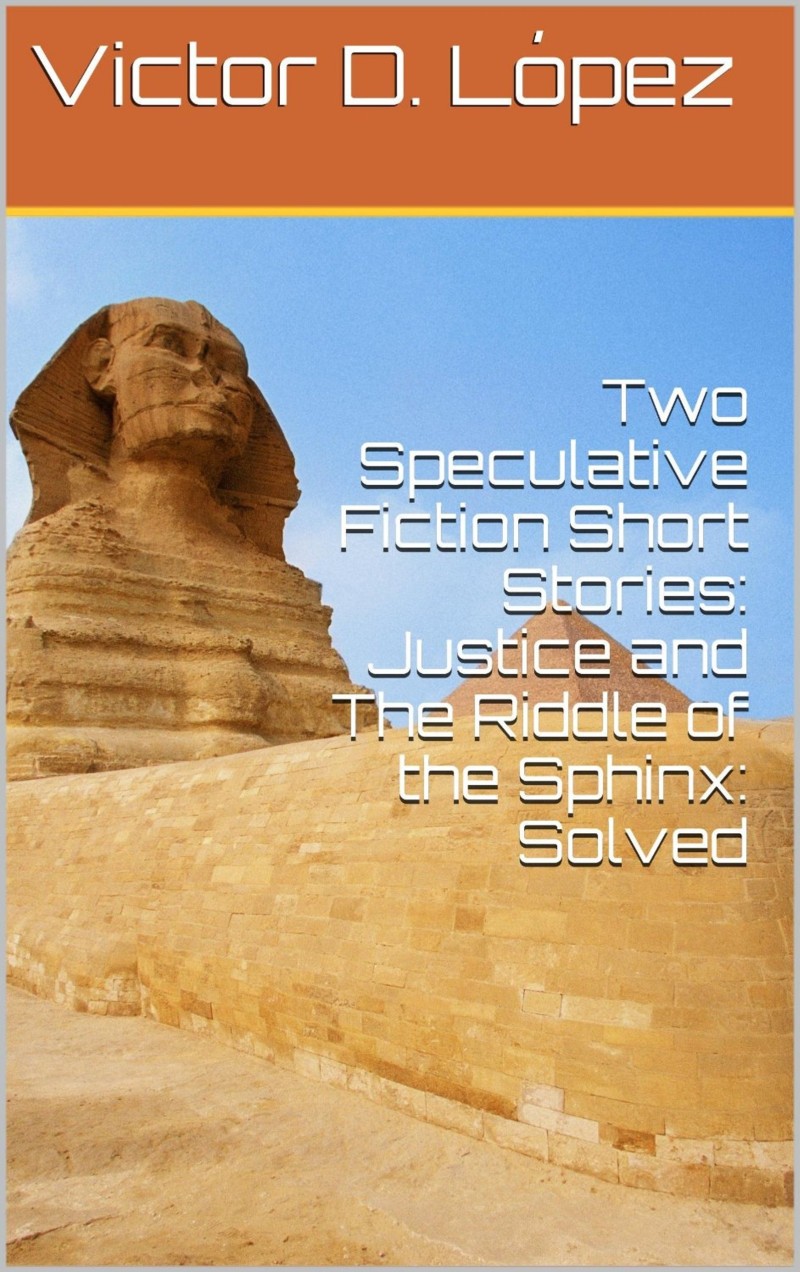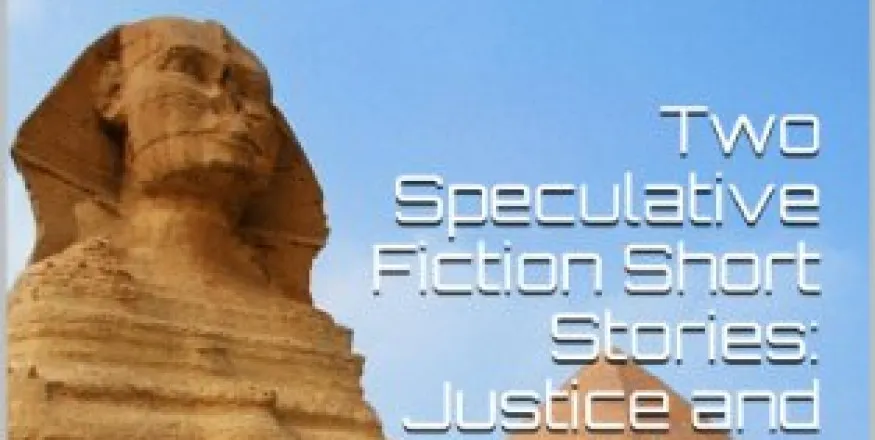
The Riddle of the Sphinx: Solved
The midday sun blazed in blinding glory directly over the Great Sphinx of Giza as Dr. Zahi Hawass, the famous Egyptologist whose love of Egyptian antiquity seems rivaled only by his love of the camera, faced the score of reporters with his well-worn Indiana Jones hat and best cat-who-swallowed-the-canary-smile.
“Ladies and gentlemen, welcome. This is a great day for Egypt and the world,” he began with an enthusiastic smile and eyes sparkling like a sleepy child’s on Christmas morning. “Our efforts over the past year to excavate the recently found chamber under the right paw of the Sphinx is complete and we are ready to reveal its content for the first time. Please, come with me that we may share this moment together.”
Without further ado and in an uncharacteristically brief fashion, Dr. Hawass turned to his left, gesturing for the cameras to follow. As he walked, he continued, turning to the cameras and beaming contentedly. “We have uncovered a portal but have not yet broken the seal as we wish to share this moment with the world.”
“Zahi,” a reporter following closely to his right called out, “Can you tell us what you expect to find?” The Egyptologist stopped and turned to the reporter, with a patient, avuncular smile, and facing the cameras directly, spoke again..
“I have no idea, but I expect it will be wonderful things.” He then turned and took several steps before once again stopping and turning to the camera. “You will see that there are no artifacts in the small antechamber we have uncovered, nor any artwork or extensive writing. There is, in fact, no traditional writing of any kind but for a line of undecipherable writing above a sealed doorway that is unlike anything that has been uncovered in the past.”
“You mean the writing is illegible?” another reporter interrupted.
“No,” Dr. Hawass replied, dabbing at his damp forehead with a large, white handkerchief.” “The writing is quite legible but is unlike any writing in the ancient or modern worlds. There are no glyphs, only previously unseen, unrecognizable symbols over the doorway. The writing is not painted but etched onto the stone and glows quite visibly even in low light. I expect it will take us quite some time to decipher its meaning and the means utilized to achieve the bright glow. We suspect it is some type of radioactive material similar to that used in instruments and watches in the recent past, though no trace of radiation has been picked up by our instruments.” He then resumed walking again towards the excavation, still some fifty feet away. “It is all part of the mystery, and it augers well for whatever archeological treasures may be secreted beyond the sealed wall, don’t you think?” His statement ended right on cue at the foot of the vertical shaft that resembled more a deep well than the traditional entrance to a burial chamber.
“You must be careful descending the wooden ladder. There is only room for a few people down there as the antechamber is only approximately three meters long by three meters wide and three meters high and we already have two workmen down there ready to breach the sealed door. I can only take one pool camera operator down with me who will share a live feed with the press. And I will be happy to hold an extensive press conference later, once what lies beyond the seal is uncovered.”
Dismissing the numerous questions shot at him by members of the media present with a wave of the hand, he pointed to the closest Egyptian camera operator previously selected and said “You can accompany me now. Careful, though. The workmen will steady the ladder below, but it is a long way down and the ladder will be unsteady.” He then stepped onto the ladder protruding above the approximately meter-wide circular hole with the camera operator first filming his descent, and then following carefully, holding onto the ladder with his left hand as he balanced the light but awkward camera on his shoulder harness with his right hand, filming nothing but his handhold on the ladder as he descended.
Approximately two stories down, he finally hit solid ground, finding a chamber that appeared dug out of bedrock, with perfectly smooth walls everywhere but for the circular hole on the ceiling through which they had descended. The cameraman immediately swept his camera around the tiny room panning back to the limits of his camera’s wide angle view. Two workmen could be seen to each side of a wall directly opposite the ladder, covered in sweat to which clung dust and small rock granules from their intense chiseling into the rock. The cameraman focused on the recessed symbols that arched above the perfect outlines of a rectangular door approximately one and a half meters wide by two meters high.
“Keep the camera on the writing,” the Egyptologist commanded and wait to be amazed.” He then turned off the intense halogen lights by pressing a switch on the line leading to the dual work lights that had brightly illuminated the small room, and the symbols immediately came alive with a blood-red glow that seemed to emanate within the carved stone. The symbols themselves were reminiscent of geometric figures and mathematical symbols, but appeared to be neither glyphs nor letters in an unknown alphabet but a sort of combination of the two that was disorienting to the mind.
“We are about to begin. Please wear this dust mask,” Dr. Hawass told the cameraman, handing him a surgeon’s mask and donning one himself. As he did so, he nodded to the workmen and signaled them to begin again as they sported their own dust-stained masks, and began chiseling at the rock in unison.
The simple hammer and chisel sounds in the small chamber was loud enough to force a slight twitch from the cameraman with each strike of the hammer. The workmen continued the jarring hammering to the center of the door which had no visible means of opening from this side of the chamber and, apparently, had not yielded to prior efforts at pushing, prodding or otherwise forcing it open. The fit of the door was so perfect as to leave only an almost invisible hairline crack to distinguish the outline of where the door met the rest of the wall on polished rock that was as smooth as glass and free of imperfections.
Five minutes later, as the camera captured the faint swirling dust produced by the rhythmic strikes of hammer on steel chisels, the ancient stone finally gave up its last efforts at resistance, leaving a small hole the size and shape of the sharpened chisel end on the stone which had yielded a concave depression several inches deep as a result of the repeated blows with hammers on chisels. An instant after the chisel had broken through, a bolt of plasma flashed the tiny hole with the intensity of the center of the sun, filling the chamber and shooting up through the well-like opening to the outside, instantaneously vaporizing the still smiling Egyptologist, the cameraman, and the chisel-wielding workmen and continuing upwards through the circular opening to the surface like a coronal emission radiating outward far beyond the orbit of Mars. Blackest shadows followed, flowing outwards like a billion bats of human size exploding from a cave in which dynamite had been detonated, evil personified shrieking outward freed from the restrictive seal placed by the protectors of what would later become a primordial cradle of civilization.
The carved letters above the breached portal left by the victors of a galactic war whose final battle was fought on Sol millennia ago, and the remnants of whose vanquished hoards, forced to march through a portal to oblivion hidden below ground in an insignificant, life supporting planet. The portal was then sealed and a guardian erected to mark the spot—using local materials and a magnificent predator from this planet to serve as a warning to the locals to stay away from this site marked by the gods.
With the passage of time and the rise of arrogant, foolish men who feared nothing but self-oblivion, the glorious lion’s head and flowing mane were ordered to be defaced and carved into the likeness of Khufu whose megalomania could not be satisfied by building the largest monument to himself that the world has ever known by way of the Great Pyramid at Giza. The result would become the iconic figure that would spawn mysterious controversies among historians and Egyptologists in the modern era with its too-small head in proportion to the lion’s body, the unavoidable result of having to fit a human face and headdress within the features of the original perfectly proportioned lion’s head and mane. In time, Khufu’s face would itself be defaced by having its nose and beard chiseled away as clearly evidenced by the chisel scars left behind by the ancient defacers of the defacer. Whether the deed was done as some argue as an act of vengeance by another pharaoh, by religious zealots attempting to eradicate a blasphemous idol, or for some other reason, it matters little.
With the original warning unheeded, this now lonely symbol stands as a pointless monument to the boundless foolishness of a now dead race which loosed once more upon an unsuspecting galaxy the unspeakable evil that had been conquered at great cost before the ascent of homo sapiens, a race which having learned nearly nothing since climbing down from the trees in its infancy ignored a blazing warning in a forgotten tongue above a portal it blindly breached. The words originally written there would much later be echoed by Dante, inspired by the residual record of that prehistoric struggle between good and evil and which in the original tongue, as in its later Latin version, could be translated as “Abandon all hope, ye who enter here.”271Please respect copyright.PENANAVn8JSRkbr4





















